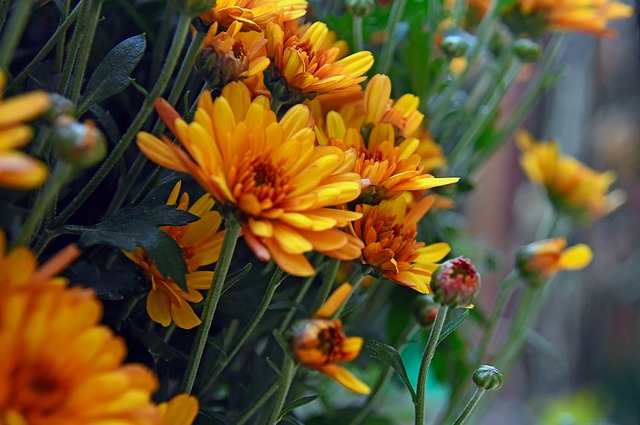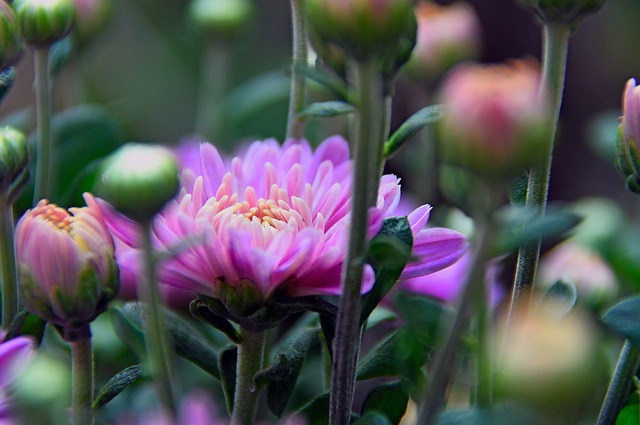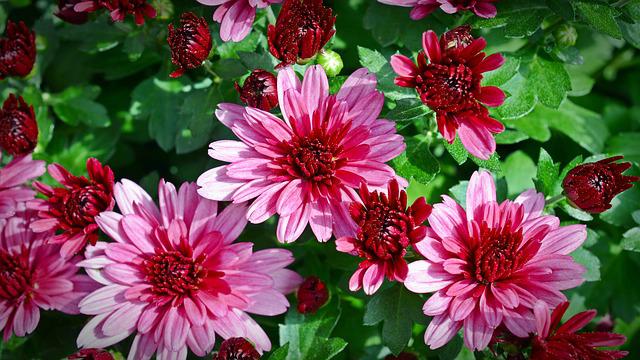How Often To Water Chrysanthemums? Know When to Water Your Flowers For Maximum Bloom, Buds, and Vibrance

The plant must not be allowed to dry out to the point where it wilts between waterings. A good, once-daily soaking should be fine unless the mum is in a particularly sunny and hot spot. Avoid the dense flowers and water the soil around the plant when watering. Mums thrive in consistently moist conditions. Keep up with regular waterings throughout spring, summer, and fall. When the soil freezes over in the winter, watering can be put on hold until the soil thaws in the spring. It is best to water your plants deeply in the morning, to a depth of 6 to 8 inches. Mums thrive with a consistent supply of water delivered to their roots at ground level. Since this is the case, the dense foliage won’t be able to hold any excess moisture. Soaker hoses enable consistent moisture supply to the soil, while water timers reduce the need to remember to water by hand.
Table of Contents
Watering Guidelines for Chrysanthemums
Time of Day to Water
It is important to water your rooted cuttings during the first several weeks after planting to encourage strong root development. For the first few weeks, water the soil evenly at the base of each plant first thing in the morning.
The morning sun is when these plants grow the most, so feeding them first thing in the morning is crucial. If you water your plants in the morning, the soil will dry out during the day, reducing the risk of root rot and fungal infections that can develop when roots sit in water overnight.
Amount of Water Needed
The risk of root rot can be reduced by using containers with adequate drainage. To plant your rooted liners successfully, use soil with good drainage.
Some wilting in the afternoon due to the day’s heat is normal for plants as the summer progresses and they grow. Water the plants thoroughly in the morning if they are slightly wilted, but let them dry out at night. A second watering will be required for dry plants and showing signs of wilting by early afternoon. For the second watering of the day, in the afternoon, you should only use clear water devoid of fertilizer.
In a commercial greenhouse, you can grow anything from a few mums to a few thousand.
Watering Schedule
The climate of the area where the mums are being grown, and their location significantly impact how frequently they need to be watered. If the temperature has been high for a longer period, you should stick your finger in the soil to see how it reacts. If the soil around your mums is dry and dusty, you should water them. The higher the temperature and the lower the relative humidity, the greater the amount of water that will be required. It’s possible that you won’t need to water the plants at all if they get enough moisture from the rain. During the growing season, it is recommended by the University of Nebraska-Lincoln Extension to water the plants at least once per week and even more frequently if the soil is sandy.

Depth of Watering
Establishing a healthy root system for mums is of the utmost significance. When a plant has deeper roots, it has a greater chance of surviving harsh winter freezes and even longer periods of drought. Suppose you want your plant to produce deep roots. Water the soil to be saturated to a depth of between 6 and 8 inches. This will encourage the plant to produce more roots. Try poking a stick down into the ground to determine whether or not the soil is moist at that level.
Moisture Retention
It would help if you stopped watering your mums as soon as the ground has cooled down. This can occur anytime between October and December, depending on the USDA zone in which you live. Spread a layer of mulch between two and three inches thick over the soil surrounding your plants. In addition to helping the soil retain moisture, this will also keep it from being too saturated. In addition, it will prevent the plant’s roots from being damaged by the severe winter temperatures.
Multiple Watering Methods for Chrysanthemums
Overhead Watering
Sprinklers or a hose can be used to water plants from above, either mechanically or manually. While overhead watering is simple, inexpensive, and easy to set up, we do not suggest it for commercial greenhouses. Sprinklers are inefficient and waste a lot of water and fertilizer, while hand-watering is backbreaking work. Later blooms may be harmed, and wet leaves may encourage the growth of fungi that cause bacterial leaf spots and other fungal diseases.
Drip Tape
Flat drip lines and connectors transport water and fertilizer to plant stems and roots through regularly spaced holes. Compared to overhead watering, it’s more expensive, but it’s less expensive than the high-end drip tubes. Drip tape systems allow you to automate your irrigation and cut down on wasted water and fertilizer. The plants’ roots are hydrated, but their leaves and flowers remain dry, protecting them from the elements and disease.
This less expensive drip irrigation system is designed to be used for a single growing season and then discarded. If you plan to use the drip tubes for an extended period, you may want to spring for the more expensive variety. In the summer heat, your drip line may stretch and restrict water flow if the emitters are placed inside the pots.
Although it takes more time to set up than traditional overhead watering, the system’s water, fertilizer, and labor savings are substantial.

Drip Tubes
This one is the most effective among the three options if you have the resources to implement it. Drip tubes are a lot like drip tape, except they’re made of better stuff and meant to last a lot longer. After it is set up, the system can be used to efficiently supply water and fertilizer to multiple crops throughout the year. Irrigation and watering can be automated at the foundation to prevent damage and mold growth.
While the initial investment is high, the long-term savings in water, fertilizer, and labor make it worthwhile for any commercial greenhouse.
